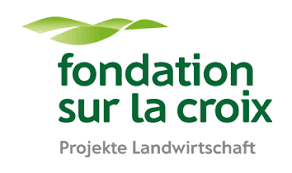Agricultural manure composting with worms
Decentralised composting with compost worms closes a gap in the recycling of organic waste. The overall aim of this project is to produce an organic fertiliser that brings carbon into the soil in the form of organic matter. The aim of the project is to develop a low-threshold, practicable process for agricultural manure composting.
Why vermicomposting in agriculture?
Composting with worms as a controlled composting process promises a very high compost quality: losses of nitrogen and carbon are lower, humus compounds are more stable and the nutrient content is higher than with classic heat compost. Last but not least, vermicompost has excellent disease-suppressing properties.
Core elements
- Definition of a new worm composting process, adapted to the demands and needs of agriculture
- Development of a composting system to reduce operating expenses and space requirements
Project goals
The aim of this project is to improve the above-mentioned properties in worm composting and to develop a low-threshold process that gives farmers in Switzerland the opportunity to compost their own or third-party manure with worms. This leads to a higher adaptation of manure composting, helps to close cycles across farms and can generate additional income for farmers.
Advantages of (worm) compost in agriculture
Improved nutrient supply
Compost not only supplies plants with nutrients, but also increases the quality of the harvested products. Environmentally problematic mineral fertilizers can be replaced.
Reduces nutrient leaching
The high nutrient inputs from fertilization also affect the water quality. Only 30-50% of the fertilizer used is absorbed by the plant. Compost as a source of nutrients binds nutrients and protects them from being washed out.
Stores water in the ground
Compost can hold up to 10 times its own weight in water and makes soil more resistant to drought. The water evaporates less quickly, reducing water runoff. Compost significantly increases the water storage capacity in soil.
Reduces maintenance costs
In the long run, compost can reduce maintenance costs. Promoting plant health reduces mortality and the associated costs of replacing plants. The increased drought resistance reduces costs for artificial irrigation.
Improves soil health
By adding nutrients and soil life, compost improves the biological, chemical, and structural health of soils. The formation of humus is promoted. This leads to an increase in soil fertility, yield stability and plant health.
Reduces the use of pesticides
Soil enriched with compost has been shown to suppress plant diseases. Its use prevents diseases, which reduces the use of environmentally harmful pesticides. The disease-suppressing effect is a crucial quality feature of compost.
Prevents soil erosion
Compost promotes soil structure, improves infiltration and slows surface runoff. Reduced soil erosion prevents flooding, loss of soil fertility and damage to the environment from discharges into water bodies.
Fight climate change
Compost is an effective way to combat climate change. It not only reduces the entry of greenhouse gases such as methane (CH4, ) and carbon dioxide (CO2) into the atmosphere, but also binds carbon in the soil. It makes ecosystems more resilient to rising temperatures.
New concepts
3DC - Vermi-3D airflow composting
Composting refers to the degradation or Conversion of organic matter under aerobic conditions (with the help of oxygen). If these conditions are met, this process proceeds quickly. If there is insufficient oxygen supply, this resp. it comes to a standstill - This is why the CFT and open worm composting methods require large areas and field edge composting requires frequent turning. In order to meet the challenges of agricultural resource utilization, existing technologies need to be further developed in order to reduce both operating expenses and space requirements.
The concept of a three-dimensional air flow composting with worms, 3DC for short, arose from many years of experience from previous projects and intensive research. The 3DC method is based on the concept of the «Johnson Su Bioreactor» (Johnson, Ellington & Eaton, 2015). The use of the compost produced with this method showed positive effects on plants and soil - among other things, an annual carbon sequestration of more than 10t C/ha could be achieved (Johnson, Ellington & Eaton, 2015). The 3DC concept is an adaptation of the "Johnson Su Bioreactor" to meet the needs of livestock farming using modular and scalable cubes.
Project sponsors
-

-
Contact
-




